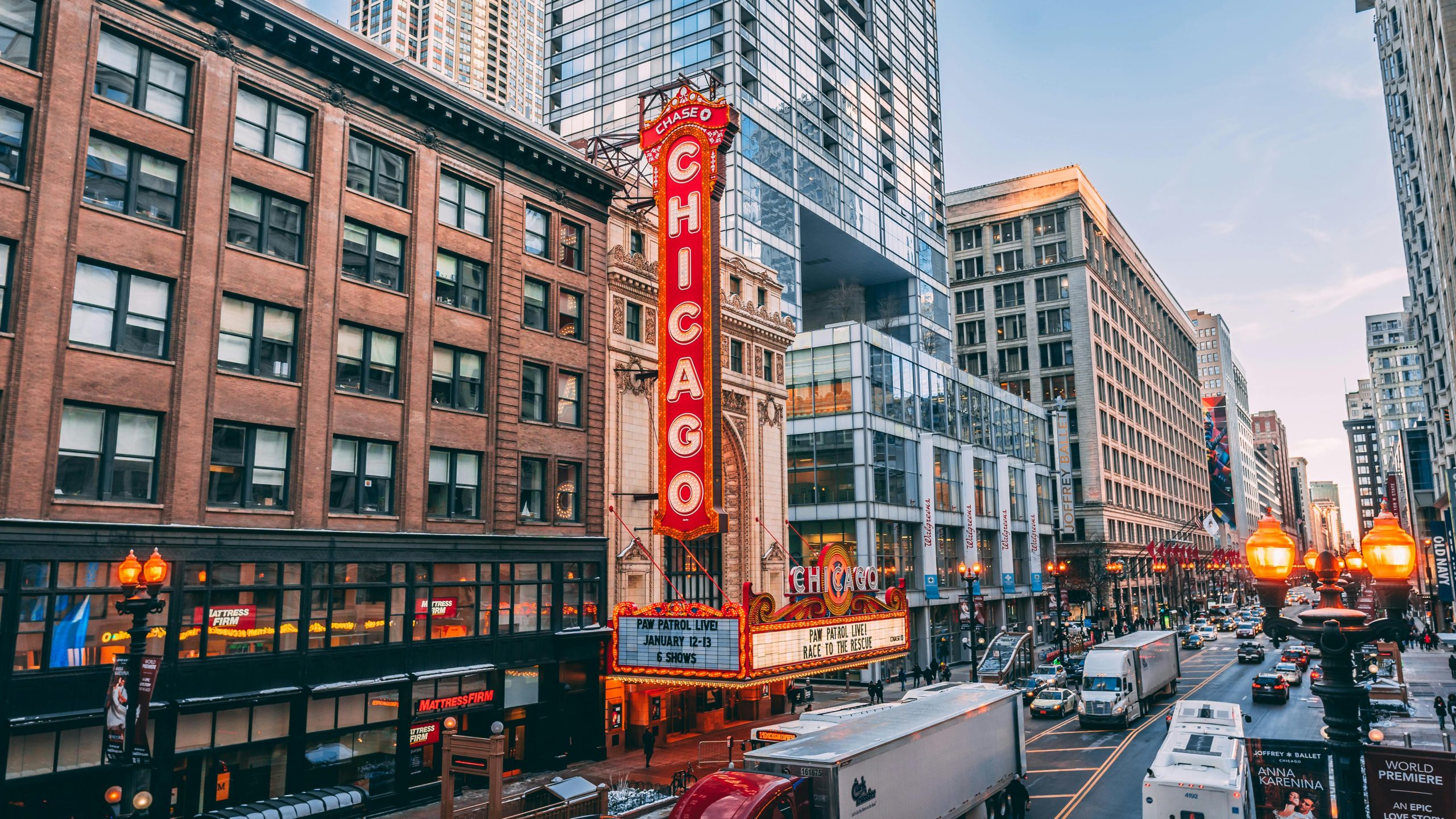Fixing Security Vulnerabilities: The need to close safety gaps across Chicago communities is essential
Handling Legal Aid and Financial Effects: The economic effects of safety discrepancies highlight the ongoing fight for city security
According to Southwest Journal, advancements in home security have become necessary as a result of high crime rates in Chicago communities like Englewood and West Garfield Park. Contrary to places like Forest Glen and Lincoln Park, there are still gaps in safety. The continuous fight for safety in the city is highlighted by the legal assistance provided to victims and the financial consequences.
 Dark Corners: Revealing the Top 11 2024 Chicago’s Neighborhoods Mystery of Danger (PHOTO: Pexels)
Dark Corners: Revealing the Top 11 2024 Chicago’s Neighborhoods Mystery of Danger (PHOTO: Pexels)
Chicago’s Neighborhoods 2024 top 11 risk zones
West Garfield Park
Standing at the top of Chicago’s list of riskiest neighborhoods, West Garfield Park, home to 17,277 people, is experiencing an unsettling rise in violent crime. According to Area Vibes, inhabitants have a startling 1 in 20 risk of becoming victims of violence, with rates skyrocketing 379% above the city average. A family acquaintance who described the neighborhood’s ongoing challenges revealed that the gang problem is a glaring reality that exacerbates the neighborhood’s misery. In addition to the direct physical threat, the widespread crime puts locals through a never-ending cycle of worry and anxiety, straining the social fabric and undermining confidence. The community’s fortitude is evident despite these obstacles as they work to enhance living circumstances despite constant threats of violence.
Washington Park
In Chicago’s 11,871-person Washington Park neighborhood, violent crime is a startling 701% more than the national average, while overall crime is 250% higher. Due in large part to the disturbingly high rate of murder, robbery, and assault, locals struggle with a persistent feeling of unease and caution. Notwithstanding these obstacles, the local community is coming together to work toward creating a safer atmosphere.
Austin
Tucked down on the West Side of Chicago, Austin’s 98,514 residents face persistent difficulties as residents of one of the most violent communities in the city. Austin was 11th in terms of violent crime, 25th in terms of property crime, and, worrisomely, 5th in terms of crimes about quality of life, such as loitering and disorderly conduct, in 2022. Residents like the brother of my colleague are actively involved in community initiatives to improve living conditions and prevent crime despite these gloomy figures, demonstrating a spirit of persistence in the face of persistent obstacles.
East Garfield Park
With 20,100 people living in East Garfield Park, Chicago, high crime rates pose serious problems for the neighborhood’s residents. According to Paw Research Center, there were 6,500 property crimes and over 2,800 violent crimes recorded in 2022. With 10,195 crimes committed overall per 100,000 residents, there is a concerning 1 in 10 risk that locals will become victims. Neighbors maintain a strong feeling of community resilience in the face of gang activity and gun violence, providing support and attention to detail despite the challenges.
Englewood
Situated on Chicago’s South Side, Englewood, with a population of 25,858, faces notable difficulties arising from criminal activity and income inequality. Assault and robbery are among the distressingly common crimes, with a crime rate that is 125% greater than the municipal average. The high rate of murder and widespread gun violence in the area make matters worse, which emphasizes the urgent need for group efforts to confront these difficult issues. With initiatives to enhance the area and promote safety amidst these obstacles, the community’s resiliency is evident.
North Lawndale
As one of the most dangerous neighborhoods in the city, North Lawndale on Chicago’s West Side struggles with long-standing issues. The neighborhood, which has a population of about 35,417, faces systemic problems as 70% of the men between the ages of 17 and 45 have criminal records. The region’s frightening crime rate—which is 198% higher than the Chicago average at 10,606 reported occurrences per 100,000 people—remains unabated despite the strong efforts emphasized by local organizations. In North Lawndale, violent crime is a serious problem that will require immediate community-driven responses. In 2020, there will be 3,003 violent events for every 100,000 inhabitants.
Grand Crossing
Grand Crossing, a community of 32,217 people on Chicago’s South Side, struggles with widespread crime. The high prevalence of violent crime (2,858 events per 100,000 people) and the concerning rate of 8,724 incidents per 100,000 people in 2020 make safety issues critical. While property crime adds to the problem—with 5,866 instances per 100,000 people, or a 1 in 18 probability of victimization—residents must maintain constant awareness and communal solidarity in the face of this ongoing threat. This compromises both mental and physical security.
West Englewood
Safety worries are still present in Chicago’s West Englewood because of the neighborhood’s high crime rate. The risk to inhabitants is high, with 9,551 reported crimes per 100,000 persons, which is double the municipal average. At 2,773 events per 100,000 people, violent crime has a concerning 1 in 37 risk of victimization; property crime, on the other hand, exacerbates the problem with 6,778 instances per 100,000 people, or a 1 in 15 chance of being the target.
Riverdale
As reported by the Chicago Sun-Times, a community at the southernmost point of Chicago faces severe safety issues. The danger of victimization from violent crime is high for locals, with 7,682 crimes per 100,000 people in 2021, including a 1 in 39 possibility. With 4,743 occurrences per 100,000 persons, property crime is a further cause for concern and highlights the urgent need for better safety protocols in this sector.
South Side
There are beautiful beaches and a high crime rate on Chicago’s South Side, which is home to 54,000 people. Property Club estimates that the likelihood of becoming a victim is 1 in 13 for locals, with 7,573 instances for every 100,000 persons. At 2,454 incidents per 100,000 persons, violent crimes—such as assault and robbery—along with high rates of gun violence and murder present serious problems. There is an urgent need for community-driven measures to improve safety, as seen by the 5,120 property crime incidences per 100,000 persons, particularly in South Shore.
Chatham
New data suggests both success and enduring issues in Chatham, a Chicago neighborhood distinguished by a complex safety landscape. New data from Chicago Business highlights a positive trend, indicating a 14% drop in crime over the previous years, despite a crime rate that is significantly lower than the national average. Still, as indicated by a poll that reflected opinions from the local population, the neighborhood’s safety fabric is intricate. A mixed perspective about evening safety highlights persistent concerns, even though the majority considers the level of crime to be modest. Amidst a context of prosperity and prudence, Chatham maneuvers towards increased security in 2020, with 7,183 reported crimes, including 1,965 violent events.
READ ALSO: Top 10 Arkansas Camping Spots: Immerse Yourself In Nature’s Beauty And Outdoor Adventures



